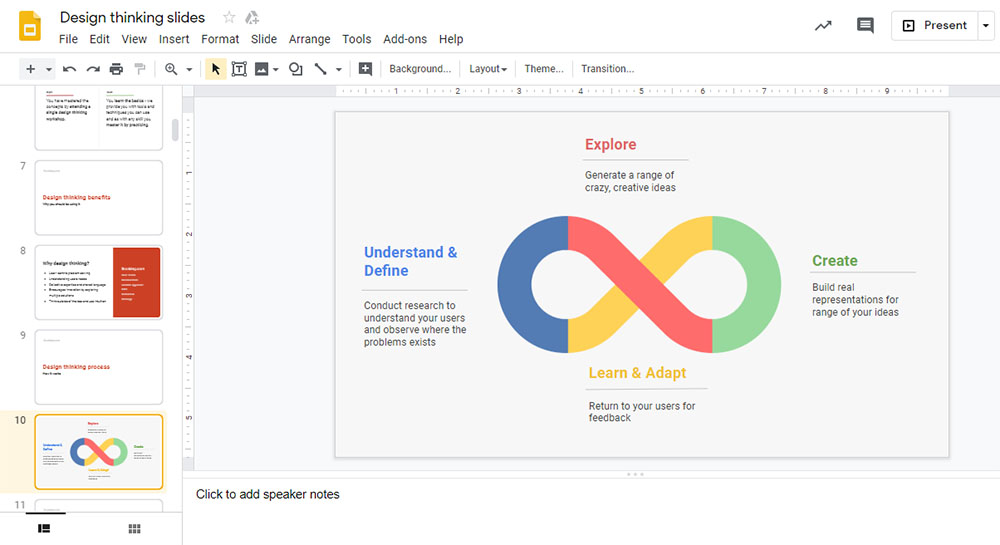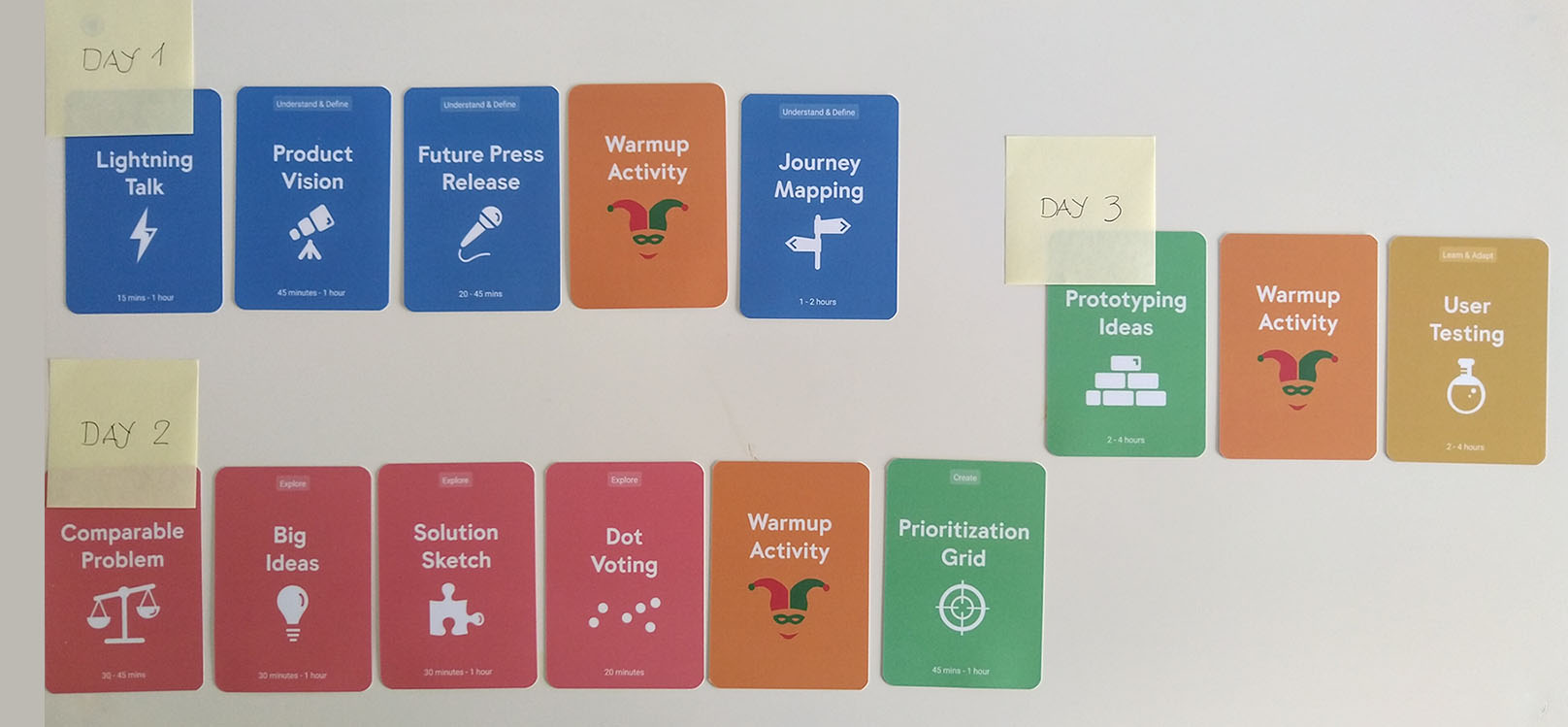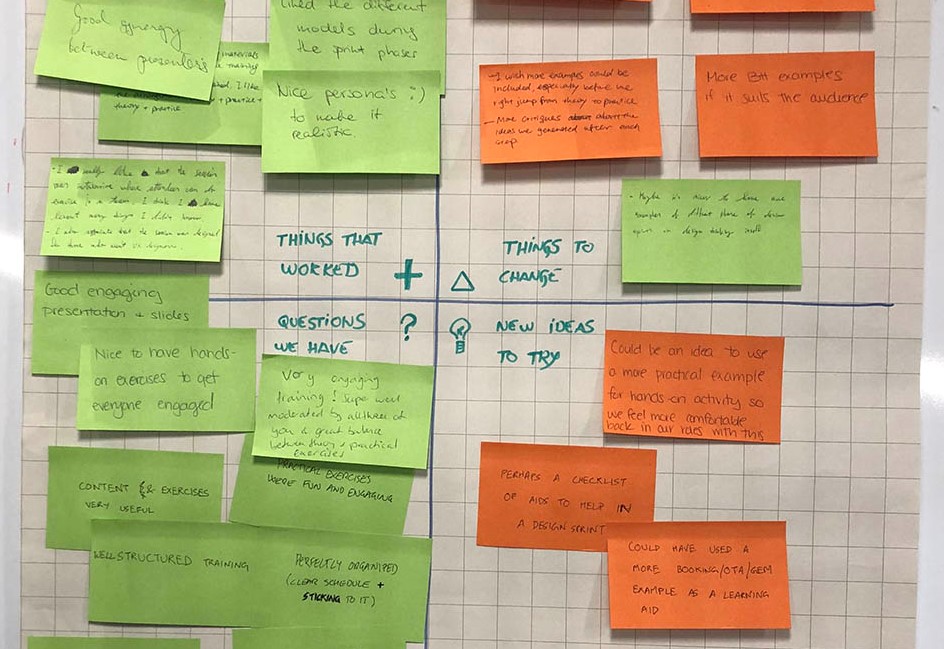Design Thinking
Booking.com, year 2019
Bringing design thinking mindset into an organization that's used to small step optimization and iterative A/B testing.

The challenge
Make it relevant
When the company started to encourage bigger changes and product innovation rather than just small step optimization, we realized that most of designers and product managers are not used to this approach and don't have skills needed to drive this. A couple of us designers passionate about design thinking got together and brainstormed about how to prove the value of using design thinking methodology and make it a standard when doing any kind of product development.
There were three big challenges we faced:
- How to educate people that don't know anything about design thinking.
- How to make it relevant for them to embrace it and start using it in their teams.
- How to help them along the way.
- driving design thinking in my unit
- preparing, organizing, giving the training and iterating on the training format
- preparing and designing design thinking cards with exercises
- working on an on-line toolkit with design thinking exercises
- collaborating with like-minded designers to organize meet-ups and drive awareness
My Role
The approach
Prove the value
Even with design thinking being a buzz word in design community, in a big company with many different initiatives happing all the time, it's hard to get people interested in something that has no clear value. And there is no better way of proving the value of something than showing it actually being successfully done and highlighting the results.
We made sure to bring together all like-minded designers and asked them to document each workshop they do and showcase the results and how it impacted the product. Soon enough, everyone wanted to be a part of this exciting new way of working where the whole team gets together and produces something big. The problem was that people got so excited that they wanted to do a full scale design sprint even when there was no real need for one.
That was the best time to start educating people and give them more of a background on when and how design thinking methodology should be used and what is the mindset behind it.

visual representation of design thinking process
Educate
When we got a list of people interested in attending the training the most important thing was to learn how much they knew about design thinking already and what they are hoping to learn so that we can successfully manage their expectations. Our group consisted of a mix of different roles without much previous experience about design thinking. We sent out some materials for participants to get familiar with the topic, but we knew we'd have to make a really good introduction for beginners.
Preparing the training and coming up with the slide deck took a long time. We have decided to go with one full day training that covers all the phases of design thinking and is a mix of theory and practice. Each phase was introduced and then participants got to practice and apply the knowledge in groups on a real life example - we used an abstract example that made it easier to concentrate on the actual exercise rather than be biased with previous knowledge.
To make a strong opening, we introduced some common myths about design thinking and then busted them. We ended with introducing design sprints and when to use them and showcased a couple of successful ones done within the company - to make it more tangible and realistic.

outcomes of "understand" & "explore": problem statement, journey map, big ideas
Engage
But just giving the training is never enough. People need to be motivated and have a good reason and an opportunity to use what you thought them. Making it easy and accessible to everyone is a good first step.
We created an online toolkit with all the different exercises from design thinking and design sprint processes. Each exercise consisted of all the practical information: materials and time needed to perform, a step by step guide on how to do it and when, plus some facilitation tips. To complement this, I prepared and designed a set of design thinking cards with a couple of bonus warm up exercises. The cards turned out to be a great touch as having something physical to play with made planning a workshop agenda much easer and more fun.

planning a three day workshop with design thinking cards
Follow up
The first training was a success - we had a lot of different roles interested in learning about this approach as we made sure to highlight it is not only for designers. We got a lot of positive and constructive feedback that allowed us to iterate and improve the next training.
Offering support is equally important as educating people so we organized a follow up meeting with all participants to answer questions and cover planning a workshop in more details. I made myself available to mentor and coach new facilitators - depending on their confidence level to either run a workshop themselves or shadow an experienced facilitator.

feedback captured after the training
Final results
Spreading the knowledge
This is an ongoing project, but more and more people are interested in learning about design thinking, regardless their role. The number of case studies is also growing and although they are not always success stories, there are valuable learnings from each. There is nothing as rewarding as having someone approach you and excitedly tell you about the design thinking workshop that they plan to do and would like to hear your feedback about it.
Key Learnings and Takeaways
This was a very interesting project that took a lot of time and energy to start and follow through, but was definitely worth it and I learned a lot:
- Planning and organizing a training usually takes more time than expected - it's never too early to start
- Only one ingredient of a good training is the actual learning, the rest is making it engaging and fun
- Make sure there are enough resources in a way that makes it easy for people to use them
- Bring yourself into it - passion can be seen and noticed easily and it makes everything so much better